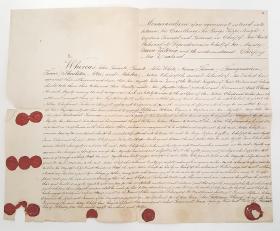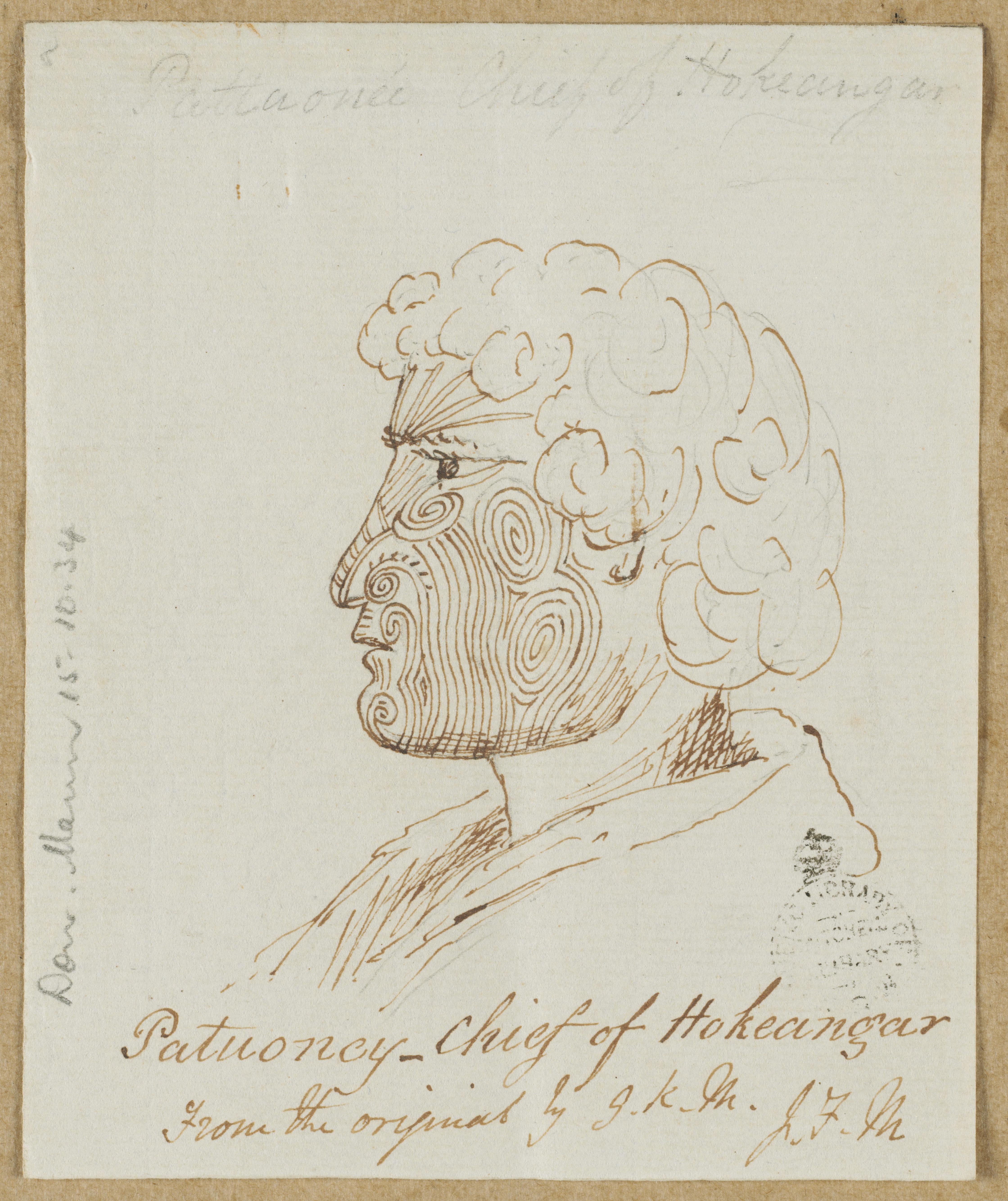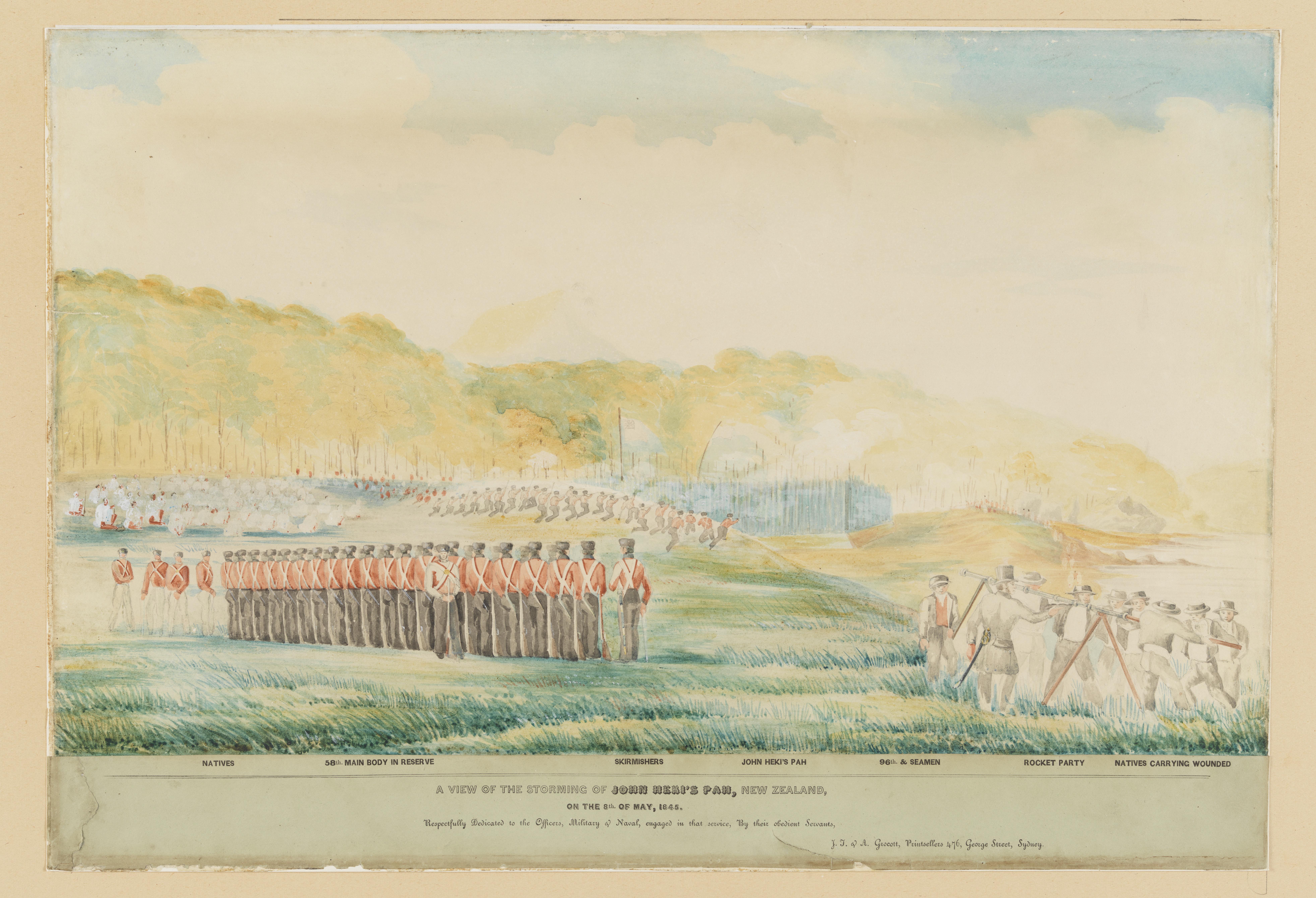On 15 June 1839, the territory administered by New South Wales was extended to cover New Zealand. This decision was pre-empted by earlier British actions which saw King William IV accept a national flag for New Zealand owned vessels in 1834 and the following year ratify a signed request by the United Tribes of New Zealand for protection from other nations. Both actions were provoked by the unscrupulous practices of traders and whalers, particularly those in the Bay of Islands, where a lack of laws governing Europeans (Pakehas) created problems for Māori who were being pressured to sell their land.
On 14 January 1840, William Hobson, a British Royal Naval Officer, was sworn in as Lieutenant Governor of New Zealand by the Governor of New South Wales, Sir George Gipps. Hobson travelled to the Bay of Islands in New Zealand to take up his new position. Upon his arrival he advised Māori and settlers of his new powers and that land titles would no longer be recognised unless purchased through the Crown. Proclamations of these powers were issued on 30 January 1840 after being printed at the missionary press at Paihia in the Bay of Islands.
Having assumed office Hobson then set about persuading Māori to give their assent to this assumption of power. Over the passage of a few days Hobson, with the aid of administrators and missionaries, put together a treaty document which outlined Māori protection by the Queen, laws for the sale of land, and acknowledged existing ownership of land by Māori. On 6 February 1840, after discussion with chiefs on the lawns of the British Resident’s house in Waitangi, some 45 chiefs signed a treaty of cession, now known as the Treaty of Waitangi.
In February 1840, just a few weeks after the signing of the Treaty, Governor Gipps drafted his own agreement to collect the signatures of some ten Maori Chiefs visiting Sydney. They had been brought to Sydney by John Jones, a Sydney landowner, who wanted them to sign a deed conveying all the land not yet sold in the South Island to Jones, William Charles Wentworth and three others.

While this was happening in Sydney Hobson had copies of the Treaty of Waitangi translated into Māori. These were taken by missionaries, colonial officials and military officers to other parts of New Zealand to gather more signatures. By 15 October the marks of 512 chiefs had been collated together from the various copies of the treaty. These were then sent by dispatch to London and were formally approved 30 March 1841.
The Treaty was unable to stop the ongoing problems between Maori and Pakeha. Hone Wiremu (Hone Heke) Henare had signed the original treaty but within a few years, he had become disillusioned with the new Pakeha regulations. On 8 July 1844, Heke ordered his second-in-command Te Haratua to cut down the British flagpole at Kororareka in the Bay of Islands. The flagstaff had previously flown the colours of United Tribes of New Zealand but had been replaced by the Union Jack. For Heke and his ally Te Ruki Kawiti this symbolised their grievances about changes made following the signing of the Treaty of Waitangi.
On 8-10 of January 1845, he cut the flagpole down again. Hobson then issued a reward for his capture. Finally on 11 March 1845, Heke cut down the flagstaff and drove the settlers out of the town starting what is commonly known as the New Zealand Wars.
In May the British attacked Heke’s Pā (fort) at Puketutu (Te Mawhe). The British rocket launchers failed o hit the Pā and after a counter-attack by Heke’s soldiers, the British troops retreated to the Bay of Islands.
Throughout this period the affairs of New Zealand were managed by the Governor General, based in New South Wales. As a result, government dispatches and other official documents relating to New Zealand were forwarded to Sydney. Many of these, along with other rare manuscripts, paintings and publications were collected by David Scott Mitchell and Sir William Dixson. Their collections were bequeathed to the Library. Sir William Dixson, in particular, focussed his attention on collecting materials relating to the Pacific and the Library holds extensive collections relating to European activities in Oceania.
Geoff Barker
Senior Curator, Research and Discovery


